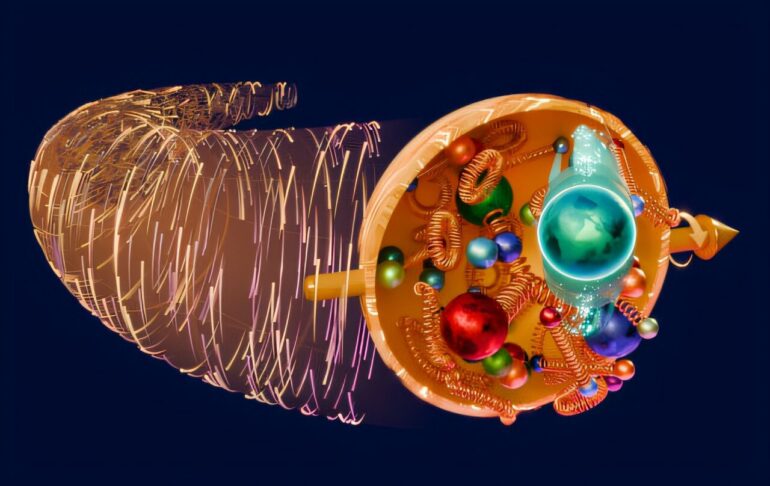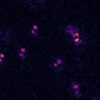Nuclear theorists at Brookhaven National Laboratory and Argonne National Laboratory have successfully employed a new theoretical approach to calculate the Collins-Soper kernel, a quantity that describes how the distribution of quarks’ transverse momentum inside a proton changes with the collision energy.
The research is published in the journal Physical Review D.
The new calculation precisely matches model-based reconstructions from particle collision data. It is particularly effective for quarks with low transverse momenta, where earlier methods fell short.
This theory-based approach provides the first accurate calculations of how the distribution of quarks’ transverse momentum within protons changes with collision energy. The approach will provide significantly more accurate theoretical predictions for the small transverse motions of quarks inside protons. This will eliminate the need to model the most complex strong-force governed quark-gluon interactions.
The team used lattice quantum chromodynamics (QCD), supercomputer-based simulations that track quark-gluon interactions on a 4D space-time lattice. The new theoretical approach enabled the team to significantly simplify their lattice QCD calculations and obtain precise results for even the small transverse motion of quarks, where the quark-gluon interactions become strong and complex.
Such precise descriptions of the small transverse motion of quarks could not be achieved in previous lattice QCD calculations that used more conventional approaches.
The new results for low-transverse-momentum quarks are consistent with previous results but are much more precise and have significantly smaller uncertainties. They also match up with models developed to explain existing experimental data.
These achievements demonstrate that the new approach can be used to predict and interpret future experimental results at different collision energies at the future Collider EIC, which is being built at Brookhaven National Laboratory, and the European Large Hadron Collider.
Physicists will use these predictions and experiments to learn about quarks’ small transverse motion within protons and how that motion contributes to proton spin.
More information:
Xiang Gao et al, Parton distributions from boosted fields in the Coulomb gauge, Physical Review D (2024). DOI: 10.1103/PhysRevD.109.094506
Provided by
US Department of Energy
Citation:
Theory-based approach gives access to quarks’ tiny transverse motion within protons (2024, December 9)



